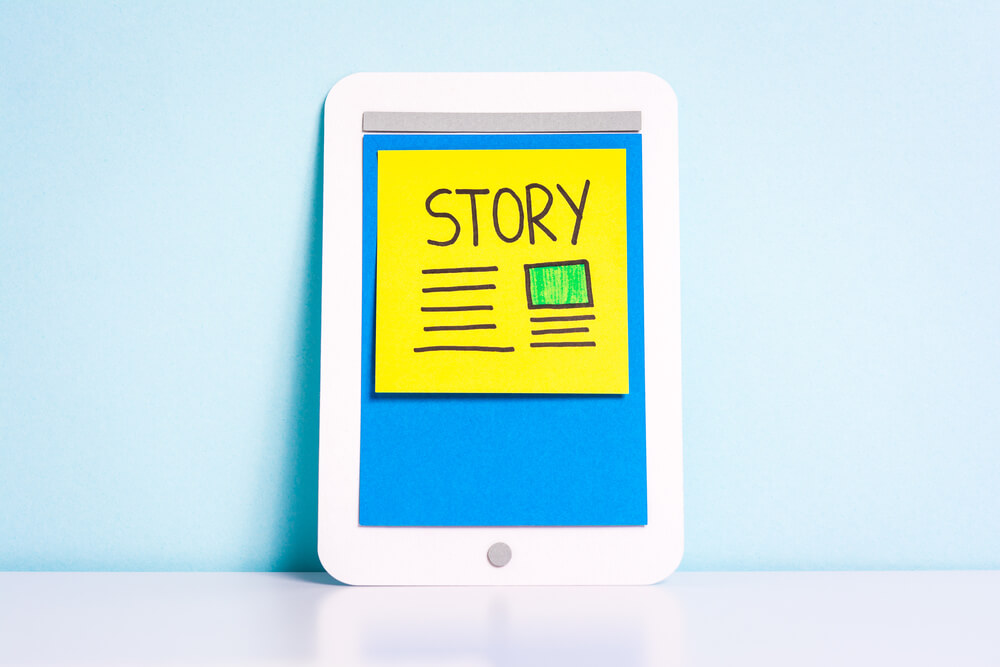
5 Storytelling Techniques in B2B Email Content Can Boost ROI
Individuals think in stories, retaining them more effectively than cold facts and figures. Integrating storytelling into your marketing initiatives keeps your brand on customer minds and provides a powerful boost to your return on investment (ROI). Whether you are working on
brand narratives, advertising, or B2B email marketing, narrative strategies boost conversion rates and enhance customer loyalty.
By tapping into the following techniques, storytelling becomes a persuasive tool that can improve your B2B email content:
- Personalizing content
- Crafting problem-solution narratives
- Showcasing customer testimonials
- Employing visual storytelling
- Implementing serial storytelling
If you want to master the art of telling stories for your business, check out the article below. Let’s go!
Tired of investing in Search Engine Optimization without getting any results? See how Digital Authority Partners turns that around!
In today's competitive content marketing landscape, grabbing your audience's attention for five minutes is already a big win. Now, think about movies and TV shows that have people hooked for hours. What sets them apart?
The short answer is storytelling.
If your B2B email content can spin a good tale, you're not just grabbing attention but keeping it for the long haul.
On average, B2B customers form stronger emotional bonds with their vendors and service providers than average consumers. B2B marketers can create emotional connections by storytelling. This can increase engagement and often leads to higher ROI conversion rates.
Harness this power with the techniques below:
Personalizing content

Personalized content is a powerful asset in B2B email marketing. It enhances engagement and resonates with the target audience on an individual level, rather than simply speaking to general needs. Strategies for making content personal in B2B email storytelling include:
- Segmentation: Divide the audience based on industry, role, or location.
- Dynamic Content: Incorporate dynamic elements that change based on recipient data, ensuring relevance.
- Behavioral Targeting: Leverage data on user interactions to customize content according to their past behavior.
Consider a software company sending emails to potential clients in different industries. They can personalize content by creating distinct narratives for each sector. For a healthcare client, the email might highlight how the software streamlines patient data management, while an email to a finance client could focus on the system's robust security features for financial data protection.
This personalized storytelling approach creates a more compelling and relevant message for each recipient, increasing the chances of engagement and conversion.
Crafting Problem-Solution Narratives
This approach engages recipients by addressing their pain points and offering solutions, creating an effective narrative. The process of crafting problem-solution narratives involves several key steps:
- Create Conflict: Begin by positioning your audience or relatable niche influencers as the protagonists of your narrative. Portray them encountering a challenge they seek to resolve or a desire or goal they aim to achieve.
- Understand the Audience: Tailor the narrative to resonate with your target audience's needs and interests.
- Introduce the Solution: Present your product or service as the solution to the identified problem, highlighting its unique features and benefits.
- Showcase Success Stories: Share real-world examples or case studies illustrating how others successfully use your solution.
- Incorporate Calls-to-action (CTAs): Encourage recipients to take a specific action, such as contacting your sales team or exploring more resources.
For example, let’s take a software company targeting businesses struggling with data security issues (the audience). To craft a problem-solving narrative, their email campaign might begin by acknowledging the increasing threat of data breaches (the problem).
They can explore how the company's advanced security software provides a robust defense (the solution). The narrative could include a brief case study showcasing a client who successfully implemented the software and resolved their security concerns (success stories). To cap it off, they utilize a CTA encouraging recipients to schedule a demo or inquire about the software.
Showcasing Customer Testimonials

Customer success stories humanize your brand, creating relatability and encouraging openness. The power of customer testimonials lies in their ability to build trust and credibility with potential clients. Whether it's a customer, employee, or founder, make sure your story has real people at its core.
Here’s how to craft an effective testimonial narrative:
- Select Relevant Testimonials: Choose testimonials that align with the specific needs and concerns of your target audience.
- Highlight Pain Points: Briefly discuss the challenges or pain points the featured customers experienced before using your product or service.
- Introduce the Solution: Articulate how your offering helped resolve the customers' challenges, emphasizing key features and benefits.
- Include Specific Results: Quantify the positive customer outcomes, showcasing tangible results.
- Incorporate Authenticity: Use genuine quotes and stories to convey authenticity in the testimonials.
For example, a marketing agency could send an email featuring a testimonial from a client who struggled with lead generation. The email might begin by acknowledging the common challenge of acquiring quality leads (the pain point). It can then introduce how the agency's targeted strategies and expertise transformed the client's lead-generation efforts (the solution).
The testimonial can include metrics such as a significant increase in lead conversion rates (specific results). At the end, the email could invite recipients to learn more about the agency's services or schedule a consultation.
Employing Visual Storytelling
Visual storytelling is a tactic designed to drive revenue using copy that engages users emotionally. Visual elements, such as photos, logos, charts, graphs, tables, etc., enhance engagement and comprehension. These break up long blocks of text, making the content more visually appealing and scannable. Follow these tips to craft compelling visual narratives:
- Select Relevant Visuals: Choose images, graphics, or videos that align with the narrative and resonate with your B2B audience.
- Establish a Flow: Arrange the visual elements to guide the audience through the story.
- Incorporate Branding: Ensure the visuals align with your brand identity and messaging.
- Include a Call-to-Action (CTA): Encourage recipients to take a specific action, such as visiting a website, downloading content, or contacting your sales team.
Enhance B2B email content with site-specific visuals. Provide an infographic illustrating a client's operational efficiency improvement with your services, featuring images reflecting their unique industry or work environment. The visual narrative can highlight tailored solutions and conclude with site-specific positive outcomes.
Implementing Serial Storytelling

Like a season-long drama with each episode building on the last, serial storytelling keeps people hooked by leveraging suspenseful twists. This approach involves unfolding a narrative across multiple emails, creating anticipation and engagement over time.
The following are key steps in implementing serial storytelling:
- Plan the Narrative Arc: Develop a cohesive storyline that unfolds gradually in successive emails.
- Establish a Connection: Ensure each email builds upon the previous one, maintaining connection between the narrative segments.
- Create Cliffhangers: Introduce suspense or curiosity-inducing elements at the end of each email to encourage recipients to eagerly await the next installment.
- Provide Value: Deliver valuable content in each email, whether insights, tips, or solutions, to keep the audience engaged.
A B2B logistics company can implement serial storytelling by introducing a supply chain disruption in the first email and gradually unveiling its innovative logistics solutions in subsequent emails. It can conclude with the remarkable outcomes achieved by a client who successfully navigated and optimized their supply chain using the logistics services.
Summing Up
Mastering storytelling in B2B email content significantly boosts ROI. Personalization ensures engagement, problem-solution narratives address pain points, testimonials build trust, visual storytelling conveys information effectively, and serial storytelling keeps audiences engaged.
These techniques transform B2B email marketing into a persuasive tool, creating lasting connections and driving higher conversion rates for a robust ROI.
Take the next step toward enhancing your storytelling prowess and maximizing your ROI. Contact Digital Authority Partners to schedule a free consultation.
Want To Meet Our Expert Team?
Book a meeting directly here




